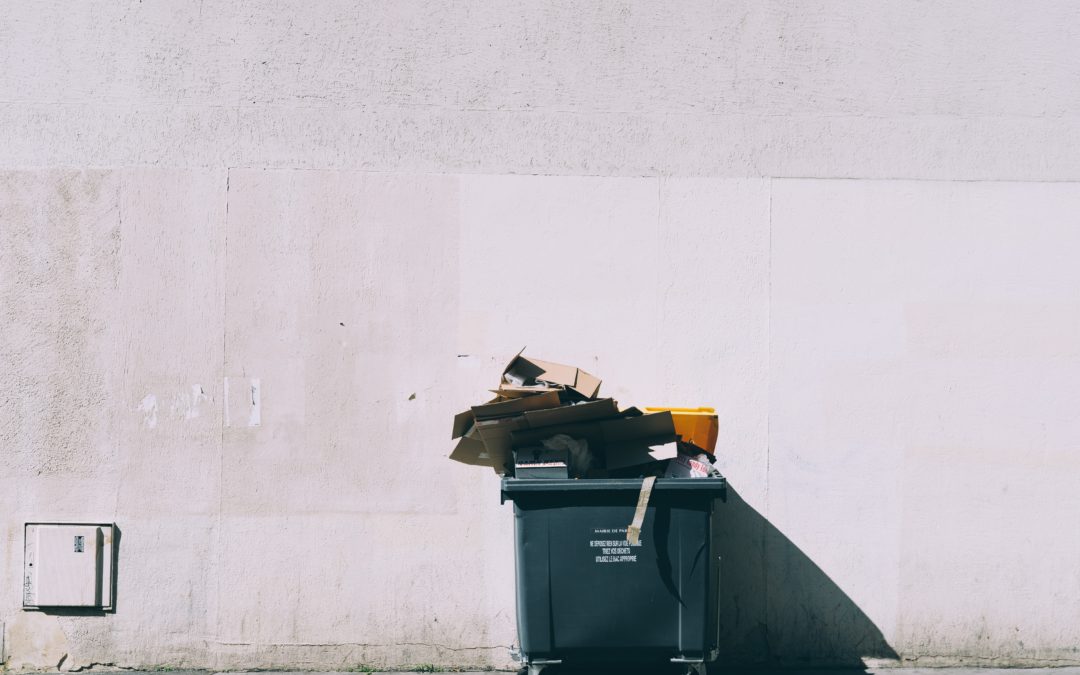No matter where you go, cardboard is never far.
Cardboard is one of the most widely used materials for packaging and shipping, and in the US alone, 46.5 million packages are shipped everyday. When we break it down by carrier, UPS claims to send 36.5 million packages per day and FedEx claims to ship an average of 10 million packages per day.
While packaging can come in many forms, about 95% of packages that are shipped and delivered in the US are made of cardboard.
That’s a lot of packages.
To clarify, that’s a lot of cardboard…
Why is cardboard so commonly used?
Cardboard is a widely used packaging material though it has both benefits and drawbacks.
Some benefits of cardboard can look like:
- It is lightweight
- It is easy to recycle
- It can be biodegradable which can make it a more “environmentally friendly” option compared to other packaging materials such as plastic (we’ll come back to this)
- It is also a “renewable resource” since it is made from trees that can be replanted
While there is truth to the above, there are also some common misconceptions about the benefits listed above…
Some of the drawbacks of cardboard include:
- The production of cardboard requires significant amounts of energy and water
- It contributes to deforestation if not sourced sustainably
- While cardboard is recyclable, we know that not all cardboard actually gets recycled
- A lot of cardboard will end up in landfills where it can take years to decompose and will release greenhouse gasses
Overall, cardboard can do quite a bit of harm to the environment. Its environmental impact really depends on various factors such as its sourcing, production, use, and disposal.
6 ways cardboard harms
While cardboard has been made so readily available to everyone, there are some major drawbacks to the economy we’ve built around cardboard.
Here are 5 ways cardboard harms the environment:
- Landfill waste
- When cardboard is not recycled or composted, it can contribute to landfill waste, taking up valuable space and potentially releasing harmful gasses as it decomposes.
- Cardboard together with paper make up about 41% of solid waste streams. These really should make it to a recycling center, but they don’t always due to what else gets thrown into the same recycling bins, or because they weren’t recycled in the first place.
- Deforestation
- Cardboard is typically made from wood pulp, which means that producing cardboard requires cutting down trees. Deforestation can have a range of negative environmental impacts, including loss of biodiversity, soil erosion, and increased carbon emissions.
- US cities lose 36 million trees annually. While not all of this is directly related to cardboard creation, it is indirectly due to the carbon emissions that have increased over the years which can lead to more fires and other natural disasters.
- Since the 1600s, the US has destroyed 75% of its virgin forests.
- Energy consumption
- The production of cardboard requires significant amounts of energy, including for transportation, processing, and printing. This energy consumption can contribute to greenhouse gas emissions and other forms of pollution, methane especially. Methane impacts the environment over 20 times more than carbon dioxide.
- Water usage
- Producing cardboard also requires large amounts of water, which can strain local water resources and contribute to water pollution if not properly treated.
- In the United States, more than 800 million tons of cardboard (regular and corrugated) and paper are thrown away yearly. If we recycled one ton of corrugated cardboard, we could save 700 gallons of water. Even better, if cardboard wasn’t used as regularly, this number would be even better…
- Chemical pollution
- Some cardboard products may be treated with chemicals to make them more resistant to moisture or insects. These chemicals can potentially leach into the environment if not properly disposed of, potentially harming plants, animals, and humans.
- Typically there are around 200 chemicals that are used in the manufacture of paper or cardboard. These chemicals can be dangerous today and when cardboard decomposes in a landfill and seeps into the environment–land, water and air.
- Cost of using cardboard
- While this is more indirectly focused on the environment, cardboard use in organizations is costly which takes away from the positive impact organizations can have on the environment. Money saved from ditching cardboard can be allocated to other ESG initiatives.
What can we do?
To minimize these negative impacts, it’s important to use cardboard responsibly, recycle or compost it when possible, and choose alternatives when appropriate.
What do you do today to minimize the negative impacts of cardboard?
A popular alternative to replace cardboard is reusable packaging. To learn more about LimeLoop’s Smart Reusable Packaging Platform, click here.

